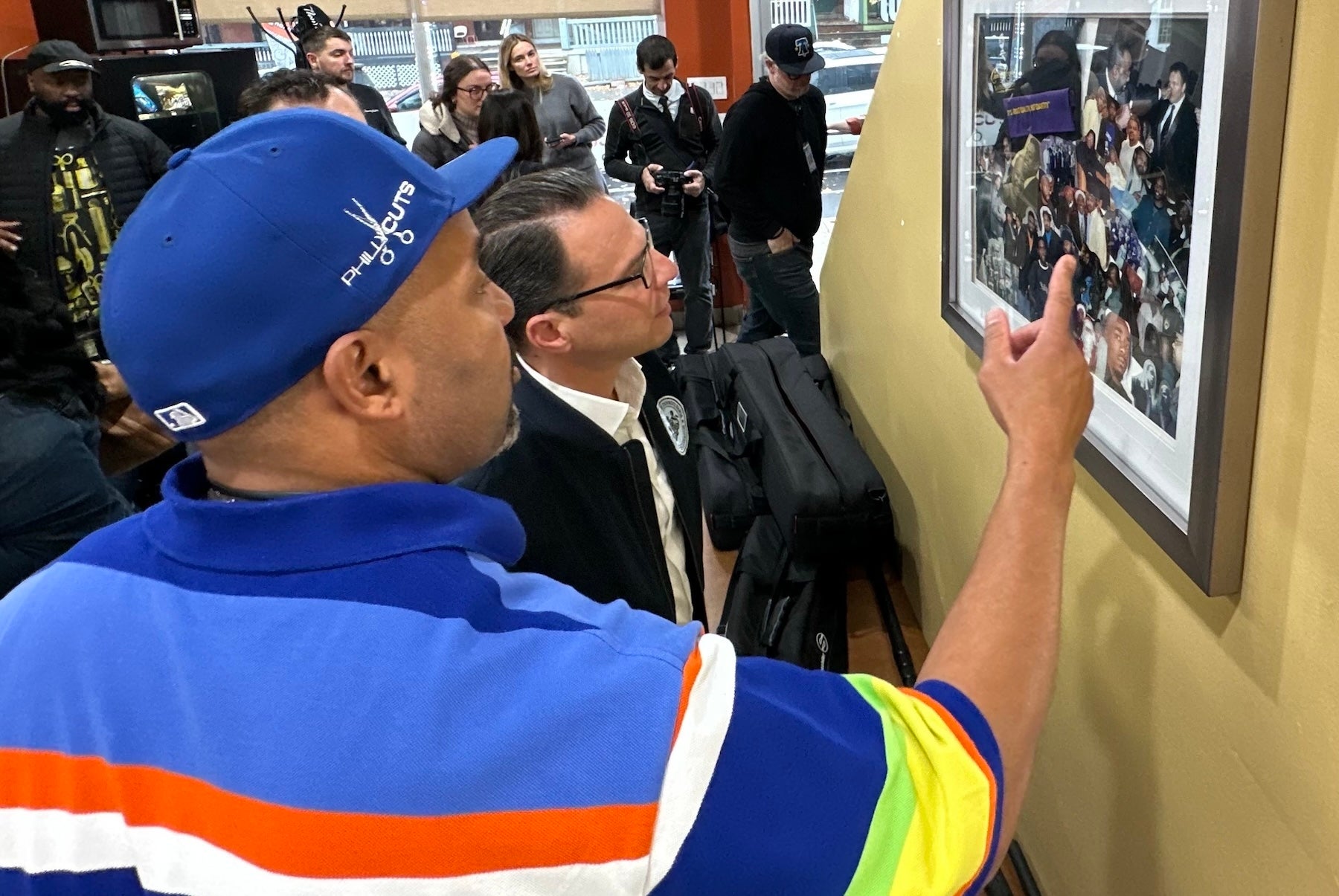Entertainment
‘The Crow’ director dispels misconceptions about film: ‘It is wildly different’
:max_bytes(150000):strip_icc()/the-crow-2-082224-c063f02248124be086cfec2a2db32dbe.jpg)
Rupert Sanders, the filmmaker behind this week’s The Crow, the long-in-the-making adaptation of the James O’Barr-created comic book saga, tries to avoid what’s said about his work in the press and online. Perhaps it comes from experience.
He previously directed 2017’s Ghost in the Shell, starring Scarlett Johansson in the lead role of the manga-to-movie adaptation — about which a lot of people had thoughts. He was then going to reunite with his actress on the film Rub & Tug, in which Johansson would have played a transgender man if not for the fervent backlash that ensued. Now, with conversations around his current movie, there always seems to be the temptation to bring up 1994’s original Crow movie, which starred the late Brandon Lee, who died from a prop gun accident on set.
“I think a lot of people are very active online and not so active in life,” Sanders comments more generally about viewer reactions in an interview with Entertainment Weekly. “Get out and do something and have less time throwing stones.”
Lionsgate
Still, he does recognize that there are some misconceptions about his version of The Crow, which stars It and Nosferatu actor Bill Skarsgård as Eric Draven, a man murdered, along with his girlfriend Shelly, but given a chance to return to the world of the living to set things right. “I think it would be great just for people to know that this is a reimagining and wildly different from the original and that the original’s still there. I haven’t recorded over anyone’s VHS,” he says. “You can still go and see that movie, and I hope this movie resonates with people who loved that movie when they were in their teens. This is my version of that text. It was my adaptation of James’s graphic novel, which I loved.”
Indeed, there are core differences between the Lee-led movie, helmed by filmmaker Alex Proyas, and the current incarnation. There are even stark departures from the source material. Instead of Eric being forced to watch a gang of men rape and murder his fiancé before ultimately succumbing to his injuries, Skarsgård’s Eric is killed alongside Shelly by henchmen working for her former benefactor, Vincent (Danny Huston), a businessman who made a Faustian deal with a sinister force to maintain his immortality.
EW’s exclusive images, including concept art of key scenes, show a peek at how Sanders translated this comic book world to live action.
David Honz/Lionsgate
Lionsgate
Eric wakes in a mystical plane of existence where he meets Kronos (Sami Bouajila), an entity who uses crows as his messengers between the realms of the living and the dead. Because their deaths were caused by unnatural means, Kronos gives Eric the power of resurrection to wipe out Vincent and his ilk, thereby saving Shelly’s soul from damnation. “This is not a remake. It is wildly different,” Sanders remarks. “It is a wild ride, and it’s for the audience of today.”
O’Barr’s comics were first published in 1989 as a narrative mixture of gothic horror, romance, and rock elements. Sanders was drawn more to the romance. “I wanted to make a dark romantic love story, like a Cure song,” he says.
FKA twigs stars opposite Skarsgård as Shelly. A large portion of the film focuses on the characters meeting in rehab, falling almost immediately in love as if Eric replaces his drug addiction with her. Then they go on the run when Vincent’s henchmen close in on her location. Sanders says his take on the material became more about “this mythological opportunity to bring the one you love back.” He explains. “The gore is in service of a love story. It’s not just nihilistic, splatter gore just for the sake of it. Every scene of action and violence is a scene of emotional empathy with the lead actor.”
Jeremy Hanna/Lionsgate
Even though Sanders’ visual vocabulary ranged from 1946’s A Matter of Life and Death to 1979’s Stalker to 1987’s Wings of Desire to 1990’s Jacob’s Ladder and Ghost, the comic book imagery played a part in capturing what he calls “the edge.” He points out the architecture and interior designs in the film channel that late ’80s, early ’90s aesthetic but acknowledges a need to modernize the story from that specific culture for which O’Barr wrote the comics.
Want more movie news? Sign up for Entertainment Weekly‘s free newsletter to get the latest trailers, celebrity interviews, film reviews, and more.
“The specificity to culture was something that was hugely important to me, but the culture that I’m specific to is obviously not the culture that was there 30 years ago,” he explains. “I want this to resonate with an audience that it resonated with when they were 17, 18, 19, 20 [years old] 30 years ago. That’s the audience that I feel this film is for. It’s got the grit, it’s got the weirdness, it’s got the kind of druggy disorientation that feels like a cult movie, but it’s made in the scale of a bigger studio movie. Although, we’re an independent movie, and it’s like we’re trying to play in the big commercial movie space.”
The Crow opens in theaters this Friday.









